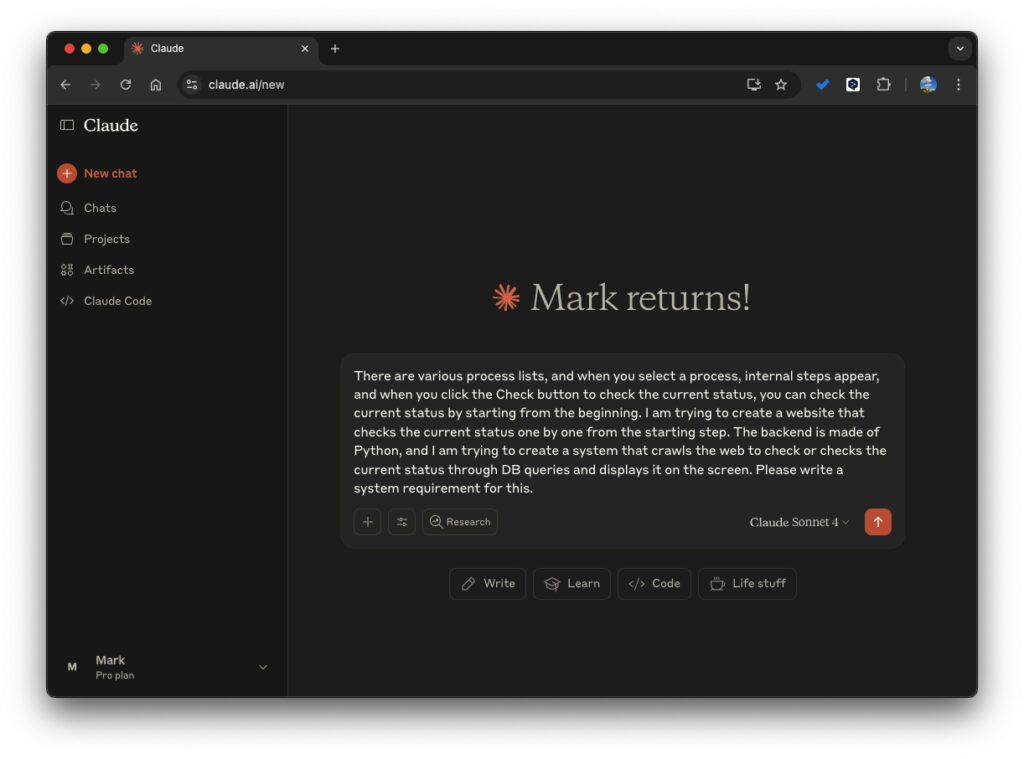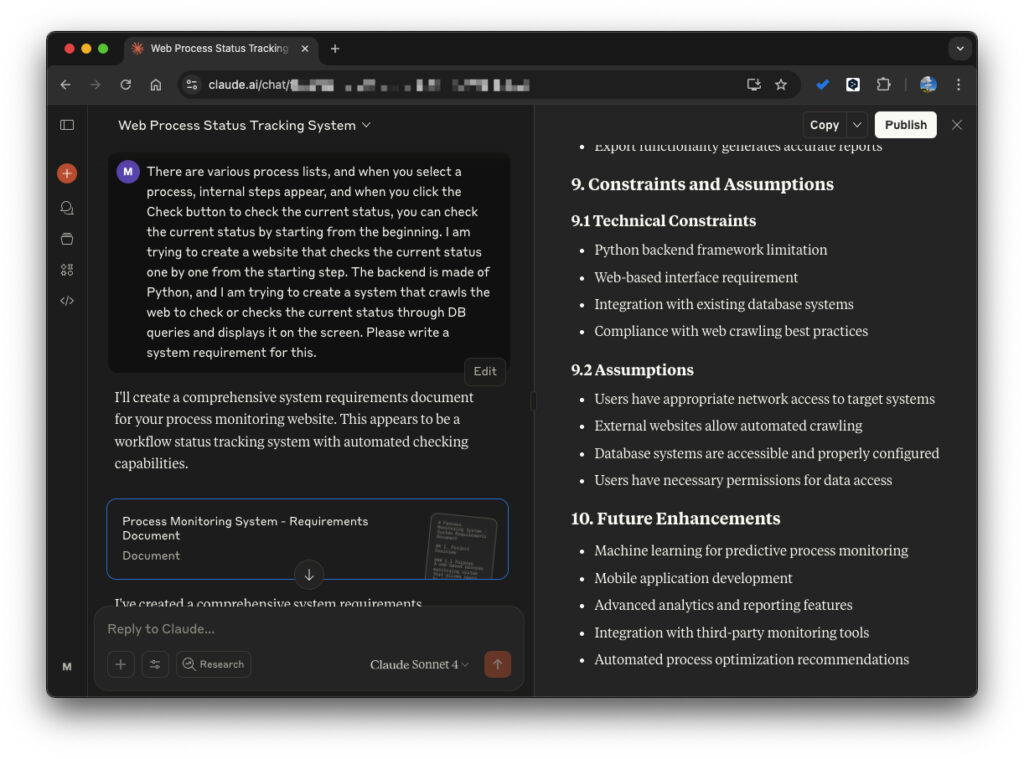Table of Contents
Introduction (Process Monitoring System Step-by-Step Design)
This article focuses on the Process Monitoring System Step-by-Step Design to illustrate its effectiveness.
As of 2025, companies and development teams are increasingly facing the challenge of managing more complex processes. With the rise of workflow automation, it has become essential to have a system that can quickly identify “which step is working well” and “where things have stopped.” In this article, I will explain how to design a process monitoring system that automatically checks the status of each step in a process, in a way that even old-school programmers can understand.
The Process Monitoring System Step-by-Step Design will help streamline the workflow.

For us so-called “dinosaur programmers,” we may not be able to keep up with every modern development trend, but at least we can ask AI for help. After all, in this industry we constantly hear about new things, right? So let’s walk through the step-by-step design of a process monitoring system.
What are we building?
We are building a web-based system that checks the status of processes step by step.
In simple terms, when a user selects a process, the system will automatically verify each step from the beginning and display the results on the screen in real-time.
The Process Monitoring System Step-by-Step Design simplifies the entire process.
- There will be multiple process lists.
- When a process is clicked, its internal steps will be displayed.
- By clicking the “Check” button, the system will show success or failure for each step.
Think of it as an automated checklist inspection tool.
Where will we build it?
This system will be developed as a web-based application, designed to be accessible through any browser.
- Server: Deployed on a Linux server or in the cloud (AWS, GCP, Azure)
- Database server: PostgreSQL or MySQL
- Source code management: Managed in a GitHub repository (e.g.,
process-wizard)
Since most small and mid-sized companies already use cloud infrastructure in 2025, deploying in the cloud is the most convenient choice for installation and maintenance.
What technologies will we use?
The system can be divided into three main areas: Backend (server), Frontend (UI), and Infrastructure (operations).
1) Backend (Python-based)
- Flask or Django → API development
- BeautifulSoup, Scrapy, Selenium → Web crawling
- SQLAlchemy + PostgreSQL/MySQL → Database ORM
- Celery + Redis → Asynchronous background task processing
2) Frontend (UI)
- React.js (or Vue.js) → UI components
- Tailwind CSS / Bootstrap → Design framework
- WebSocket → Real-time updates
3) Infrastructure
- Nginx + Gunicorn → Web server setup
- Prometheus + Grafana → Monitoring and dashboards
How will we build it?
Let’s look at the actual workflow step by step.
Step 1: Define Processes
- Each process and its steps are stored in the database.
- Example: “Order processing → Payment verification → Inventory check → Shipping request”
Step 2: User Interface (UI)
- The user selects a process from the browser.
- The process steps are displayed, and the “Check” button is enabled.
Step 3: Execute Status Check
- When the button is clicked, the Python backend begins checking.
- Each step can be checked in one of the following ways:
- Web crawling (fetching data from external sites)
- Database query (checking internal data)
- API call (integrating with external services)
Step 4: Real-time Results
- The current step and its outcome (success, failure, error) are displayed on the screen.
- With WebSocket, the screen updates automatically in real time.
Step 5: Save Results & Reporting
- All execution results are recorded in the database.
- Users can review historical results in a History menu.
- Export options such as PDF and CSV are also supported.
Why is this necessary?
In 2025, enterprise systems have become increasingly complex, evolving into microservice-based environments. With dozens of services interconnected, even one failed step can delay the entire process.
Having people manually check each step is time-consuming and inefficient. That’s why automated process monitoring is no longer optional—it’s a necessity.
Future Extensions
- Machine Learning Predictions: Go beyond simple monitoring by predicting failures before they occur.
- Mobile App Support: Enable alerts and monitoring directly on smartphones.
- Integration with external monitoring tools: Connect to Prometheus and Grafana for advanced dashboards.
Use of AI
Let’s try asking an AI like Claude with a simple requirement:
“There are various process lists, and when you select a process, internal steps appear. When you click the ‘Check’ button, you can check the current status step by step from the beginning.
I want to build a website that does this. The backend will be Python, and the system will check the status either by web crawling or by running database queries, then display it on the screen.
Please write a system requirement for this.”
By inputting this into an AI prompt, we can get a draft system requirements document. That’s a good enough starting point. For now, this will conclude Step 1 (Process Monitoring System Step-by-Step Design), and in the next stage, we will dive into the actual implementation.


Conclusion
Today we looked at the step-by-step design of a process monitoring system by asking four key questions: What are we building? Where will we build it? What will we use? How will we build it?
Think of this system as an automated checklist tool. Such systems will be increasingly necessary for companies and organizations, and as of 2025, adoption is growing rapidly.
